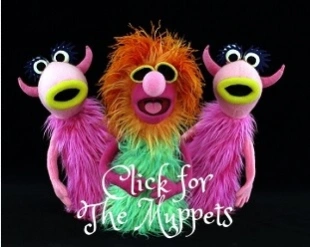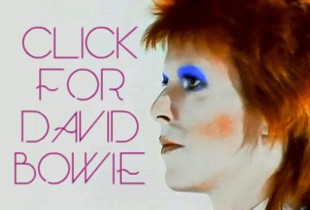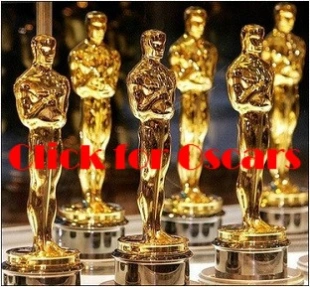Legends: Peter Sellers ~ the clown prince
Britt of all right: Funny, handsome, rich and talented – comedy great Peter Sellers had it all (including Ms Ekland as a wife), but the truth was often more bizarre than the fiction of his films
All right, I’ll come clean, what with all my recent, deliberately topical scribblings about Live Aid and World Cups past, methinks I’ve let this section of the blog – the ‘Legends’ series – go too long without a new edition. So, following not-so-hot on the heels of the first ‘Legends’ post (on Sir Roger Moore, no less), here comes the second. And it, too, is topical because July 24 – just a few weeks ago, of course – was the 30th anniversary of the death of its subject, the inimitable, incredible and unforgettable Peter Sellers.
If ever there were a one-off, it was Sellers. Naturally and effortlessly hilarious, he was also graced with something few fellow comedy greats are – ‘leading man’ good looks. On the downside, however, he was afflicted by inner demons and a list of psychological problems as long as your arm. Yet, of all post-war culture’s top comics/ comedy actors, he was truly, truly among the very best. One could then compare him to that other British virtuoso of funniness, Peter Cook – both of them were original, ingenious and highly influential; and yet Sellers had the big Hollywood career and became adored by the world’s masses, not by his contemporaries most of all, as is perhaps the case with Cook.
His background, too, was very different. Unlike Cook, he didn’t take the university route into comedy (so popular since the ’60s); in fact, his stepping stone couldn’t have been farther away – the military. Born Richard Henry Sellers in Southsea, Portsmouth, in September 1925 (but nicknamed Peter by his parents after his elder stillborn brother), he came from showbusiness stock. He often accompanied his family on the pre-war variety circuit, and developed a keen interest in comic performance and an ability in drumming. However, his stage career was halted before it had begun when the Second World War broke out in 1939. Having enlisted in the RAF, he rose to the rank of corporal and his tour of duty took in India, Burma and, after the war, France and Germany. Owing to his grounding due to poor eyesight for the duration of his service, Sellers was able to become involved with – and spend some time in – the Entertainments National Service Association (ENSA), an ideal organisation for him in which he honed his drumming, and more importantly, comedy skills.
All they hear is Radio Goon-Goon: Peter Sellers with Spike Milligan and Harry Secombe (left); the Beatles covers album featuring the infamous A Hard Day’s Night single (right)
Indeed, ENSA served him so well that, upon his discharge, he quickly established himself as a stand-up on the variety circuit, and gained an audition at the BBC by calling a producer and pretending to be radio personality, and future star of the Round The Horne show, Kenneth Horne – his extraordinary talent for mimickry would become a cornerstone of his career, of course. This move proved inspired, as it eventually led to him teaming up with another three comedy performers to front a radio show of their own. They were Spike Milligan, Harry Secombe and Michael Bentine and, by the time of its second series, the programme became known as The Goon Show. It was Sellers’ big break – and, make no mistake, it was big.
Very soon, seemingly the entire nation was hooked on the absurd, surreal and very funny weekly adventures of Neddy Seagoon, Eccles, Bluebottle and Hercules Grytpype-Thynne, and, thus, very soon Sellers was on his way. Mostly conceived and co-written by Milligan, the show owed much to Sellers’ incredible grasp of accents and his character-creation skills – he provided the voices to more regular characters than any of the others. The show ran for 10 series, stretching from 1951 through to 1960, and is widely credited as providing a massive influence on practically all Anglo-American comedy that followed it, most especially Monty Python’s Flying Circus and the so-called ‘Alternative Comedy’ movement that came to prominence in the ’80s.
Unknowing of the legacy The Goons was to create, Sellers was ambitiously, and understandably, looking to throw his net wider. He moved into comedy singles (famously releasing, among others, a comic cover of The Beatles’ A Hard Day’s Night – in an Olivier-does-Richard III voice), but perhaps his real calling would lie elsewhere. Although at this time tubby, his face was clearly more camera-friendly than either Milligan or Secombe’s (Bentine had left The Goons after the first series), so it was obvious in which direction he should focus his attentions now – film. British cinema of the ’50s was a far cry from what it would become in the next decade – when colour, social-liberation and the New Wave would tansform its look, style and aspirations – yet, led by Ealing Studios’ entertainment facory, it was a world-leader in making funny, socially-barbed and intelligent movies. In short, it was made for Peter Sellers and he was made for it.
“If you ask me to play myself, I will not know what to do. I do not know who or what I am” ~ Peter Sellers delivering, perhaps, the definitive word on himself
Of this early period of his film career, the top highlights were The Ladykillers (1955), The Mouse That Roared (1959) and I’m All Right Jack (1959). The first – an undisputed, dark-as-night, Ealing comic classic – saw him on supporting duty opposite a superb Alec Guinness; the second playing the lead – or rather – three lead roles, including an elderly Dutchess and fictitious Prime Minister; and the third won him a BAFTA award for Best Actor as brilliantly comically observed Communist trade union leader Fred Kite. However, it was with rom-com The Millionairess (1960) that he would gain global recognition.
With Sellers heading the bill as an Indian doctor alongside Italian screen star and sex bomb Sophia Loren as the eponymous millionairess, the picture proved to be an international crowd-pleaser and spawned a UK hit single for the two stars with the gently suggestive Goodness Gracious Me (a pop-culture nugget that has easily, and rightly, outlived the film in people’s memories). Sellers’ experience in making the movie and the song also brought him a good deal of press and media interest, more than ever before, due to a facet of the man that would rear its head in the years to come again and again, and again and again. Indeed, it would prove one of the major ingredients in the making of the Sellers legend.
Perhaps helping to fuel his leading man credentials, Sellers wasn’t necessarily more lusty than other men, but he sure had a capacity to fall in love – or, probably in many cases, fall in lust – with women. And that’s exactly what he did with Sophia Loren. Moreover, he hardly hid the way he felt about her under a bushell, which given they were both married at the time was seen by many, Loren included, as inappropriate to say the least. She was married to influential Italian film producer Carlo Ponti and Sellers to first wife Anne (née Howe), with whom he had two young children, Michael and Sarah.
Indeed, Sellers’ relationships with those closest to him were turbulent to say the least. He rowed with his wife contantly and made up for slights to his children by giving them expensive gifts – he would often show a reputedly angry, even cruel, side to them, especially Michael. Prompted by his bizarre ‘courting’ of Sophia Loren (at one point he carted his children off on a holiday to Rome while pursuing her), Anne eventually divorced him in 1961. His relationships with his parents weren’t exactly conventional either. Prior to his successful career, his father Bill – a Yorkshire-born Protestant – didn’t believe he’d amount to anything in the entertainment field, telling him his talents were so lacking he’d be better pursuing a living as a roadsweeper. Conversely, his Jewish mother Peg – thus, in turn, making Sellers himself a Jew – always encouraged and backed him. It’s widely believed that Sellers relied heavily on the opinion and emotional backbone of his mother, right up until her death in 1967.
Still, while his personal life lurched from one chaotic misstep to the next, his career continued to ascend and, soon, went stratospheric. Impressed by the actor’s comedic character creations, renowned filmmaker Stanley Kubrick turned to him when casting Lolita (1962), a cinematic adaptation of Vladimir Nabakov’s novel. Sellers landed the role of colourful US playwright Clare Quilt. In spite of his doubts about being able to pull off the character, and nervousness at doing – at Kubrick’s insistence – so much improvisation in the role, Sellers’ work was critically acclaimed and he went on to play the title role – and two further roles – in Kubrick’s next movie, Dr Strangelove Or: How I Learned To Stop Worrying And Love The Bomb (1964).
Having already played three different characters in The Mouse That Roared, Sellers’ work on Strangelove wasn’t necessarily new ground for him, but the opportunity was. Here was a huge Anglo-American movie production (featuring futuristic, unforgettable sets designed by Bond alumni Ken Adam), which was arty, edgy and dripping with quality – fellow acting talent included George C Scott and the screenplay was co-authoured by cult ’60s writer Terry Southern. And Sellers took the opportunity with bells on. Although he also delivered performances as Group Captain Lionel Madrake (whose uppercrust persona clearly owed a debt to the actor’s time in the RAF) and the bald US President Merkin Muffley, it’s as the insane, former Nazi nuclear scientist Strangelove that Sellers’ contribution to the film is best remembered. The movie was a hit – both critically and with the public – and Sellers was nominated for a Best Actor Academy Award. He had even intended to play a fourth role, that of the effervescent Texan pilot Major TJ ‘King’ Kong, but broke his leg during the production and couldn’t quite perfect the accent.
Parrot and pistol: the eponymous Inspector Clouseau and a ‘swine beurd’ (left); James Bond (aka Evelyn Tremble) in the almighty mess of a curio that was the Casino Royale spoof (right)
He would have no problem getting the accent right for his next role. The film was supposed to be a vehicle for David Niven, a smooth, luxurious, Alpine-set comedy caper, also starring the gorgeous Claudia Cardinale and Capucine. But it was Sellers who stole the show. Owing to a busy schedule, he hadn’t had time to think through the acoutrements he might employ to help create his character, so on the flight over to Rome – where filming began – he looked around at the passengers he was sharing the plane cabin with and borrowing a clipped moustache from one passenger, a trilby hat from another and a trenchcoat from another… Inspector Jacques Clouseau was born.
Clouseau, of course, became Sellers’ signature character; the role for which he became – and is still – known the world over, and rightly so. It’s an ingenious creation. A bumbling, clueless and pompous detective of the Sûreté, who somehow – most often through luck than design – manages to solve the cases to which he’s assigned, driving his senior officer, Herbert Lom’s terrific Chief Inspector Lom, mad in the process, constantly fighting his manservant Cato to sharpen his karate skills, and incongrously seducing the likes of Elke Sommer, Lesley Anne Down, Dyan Cannon and Capucine. His most distiguishing – and arguably funniest – totem is his outrageous French accent, pronouncing words wrongly (‘room’/ ‘reum’; ‘bumps’/ ‘beumps’) not just to an English ear, but also, amusingly, to the French ones in his films.
The Pink Panther (1963) was the first of them and its director Blake Edwards, realising he was on to a very good thing, quickly had Sellers reprise the character in the classic A Shot In The Dark the following year (which had started life as a Clouseau-less stage play). More than 10 years passed before the next in the series, 1975’s The Return Of The Pink Panther, a huge box-office hit, and then a year later The Pink Panther Strikes Again entertained audiences too. If Revenge Of The Pink Panther (1978) may have been an adventure too far, it did have its moments. However, Trail Of The Pink Panther (1982) and Curse Of The Pink Panther (1983) didn’t even feature Sellers, made as they were after his death (although the latter did feature Roger Moore in an unexpected cameo supposedly as the detective – for which he was billed in the credits as the brilliantly monikered ‘Turk Thrust II’). Compared to the ’60s films, the ’70s Pink Panthers were less sophisticated and bawider affairs and Clouseau himself became more absurd, egocentric and fantastical a character; yet, for me, the effect was no less funny. If Clouseau is the creation for which Sellers will be principally remembered for all-time, and not the artier, cleverer Strangelove or Fred Kite, then it’s no bad thing – the character is a whirlwind of surreal, slapstick comic energy with a very silly voice; the perfect evolution of his actor’s Goon creations. And he’s a bona fide icon of cinema too boot.
“He had been there: starred in the movies, married the young women, driven the fast cars, taken the drugs, drunk the wine, made all the cash, spent the cash and let down all those people who had ever really cared for him” ~ Michael Sellers on his father in the book Sellers On Sellers, published in 2000
In the years between A Short In The Dark and The Return Of The Pink Panther, Sellers had roles in prominent films, What’s New Pussycat? (1965), Bond spoof Casino Royale (1967) and The Party (1968), as well as roles in real curate’s eggs, such as Alice’s Adventures In Wonderland (1972) – in which he played the March Hare – and Soft Beds, Hard Battles (1974) – in which he played a total of six roles. Unquestionably then, Sellers had finally, absolutely arrived, and his next venture seemed to confirm this. In 1964, following a truly whirlwind romance, he married an unknown 22-year-old Swedish model named Britt Ekland. Having seen her picture in a newspaper, he proposed to her almost immediately. And, immediately, they were a star couple, appearing in three films together, Carol For Another Christmas (1964), After The Fox (1966) and The Bobo (1967) – none of which were hits. Like his previous one, Sellers’ marriage to Ekland was unconventional and rocky, and they eventually divorced in 1968, having had one daughter together. Ekland, of course, would go on to have a successful acting career herself, starring in the films Get Cater (1971), The Wicker Man (1973) and Bond movie The Man With The Golden Gun (1974).
And one half of a glamorous Swinging Sixties couple as he was, Sellers certainly embroiled himself in the culture of the era too. He became good friends of both George Harrison and Ringo Starr and a few of the films he made in that period owed more than most to the hippie movement (most notably I Love You, Alice B Toklas! (1968) and The Magic Christian (1969), in which Starr co-starred) . It’s said that he also dabbled in different substances, regularly smoked cannabis and, at this time, began consulting an astrologer, something he reputedly put great faith in for the rest of his career and life. While, as if underlining his place in the firmament, he was also on good terms with the British Royal family. He could genuinely boast to be friends with Princess Margaret (she appeared in the home movies he liked to make) and, according to Britt Ekland, was something of a court jester for the Queen Mother. Since his death she has commented: “One afternoon before we married he had disappeared saying that he had to do something ‘important’. I was to learn he had spent afternoon tea with the Queen Mother at Clarence House”.
As the ’70s slid into the ’80s, though, and with Clouseau’s adventures running out of steam, Sellers himself was too. He’d suffered as many as 13 heart attacks in a few days back in 1964 and in their wake, instead of trusting in doctors, had turned to the likes of psychic healers and astrology. In 1977, he suffered another heart attack and had a pacemaker fitted. Ignoring medical advice to have open-heart surgery (which could have prolonged his life), he continued to work and, finally, in July 1980 – while trying to get another Clouseau movie entitled The Romance Of The Pink Panther off the ground – he suffered a huge heart attack that put him in a coma. Two days later, he was dead – at the age of 54. Following his divorce from Ekland, he had married model Miranda Quarry in 1970 (they divorced four years later) and then actress Lynne Frederick in 1977. In his will, he left his entire estate to his fourth and final wife and just £800 each to his three children. Amazingly, his son Michael died from a heart attack 26 years to the day after his father did, and was just two years younger than his father upon his death.
Cover star: Playboy from April 1964 – Sellers was the first man ever to make it on the magazine’s cover (left); Time magazine from March 1980, featuring Sellers and several of his characters on the cover – the question is a moot one (right)
Peter Sellers then was an enormously talented, complicated man. The sort of individual who, in retrospect, it seems impossible would never have achieved fame and success, and was always destined to become a global superstar. Yet, like so many oh-so talented – and funny – stars that came before him, he had a chaotic personal life and great trouble defining himself outside his roles and his public persona. As glamorous, exotic and bewitchingly fascinating as his real life was, he’s perhaps as well remembered then through his creations.
And, while dogged by serious ill-health in his middle age and with his star finally fading, let’s not forget that Sellers did have one final, stellar moment. Indeed, in the outstanding black comedy Being There (1979), he was cast as Chauncey ‘Chance’ Gardiner, a simpleton who has learnt practically all he knows about the world from television and is lauded by wealthy Washington movers-and-shakers for what seems to them to be his other-worldly wisdom. Sellers’ performance was unlike anything he’d delivered before; funny, yes, but subtle, even understated. It was blessed with quiet brilliance. And for it he too was blessed with a Golden Globe award and was nominated for both an Oscar and a BAFTA award.
At the end of Being There comes its most memorable and inspired moment, as Chance turns away from the polticos who look to him as some sort of a messiah and proceeds to step on to a lake and, yes, walk on water. A glorious movie moment that doubles then as a metaphor for Peter Sellers himself? Surely, undeniably, yes – and that’s not gooning around. 



























Trackbacks